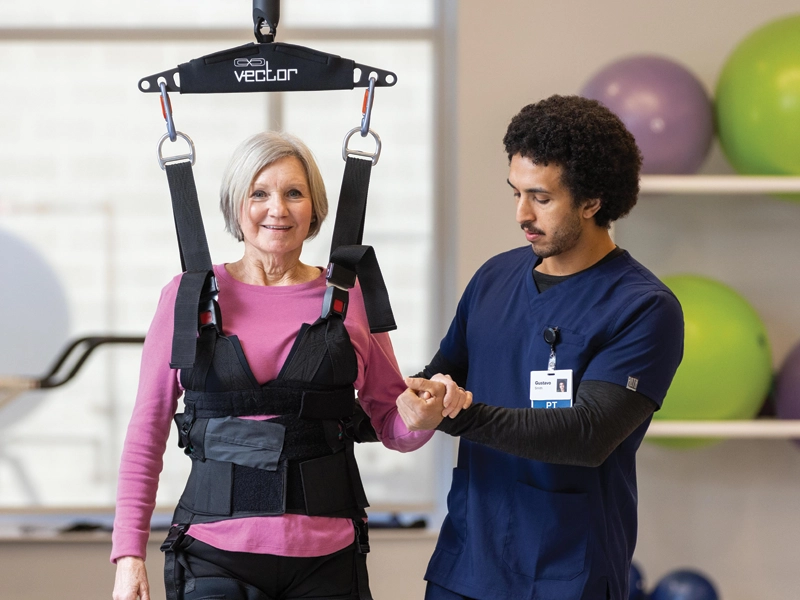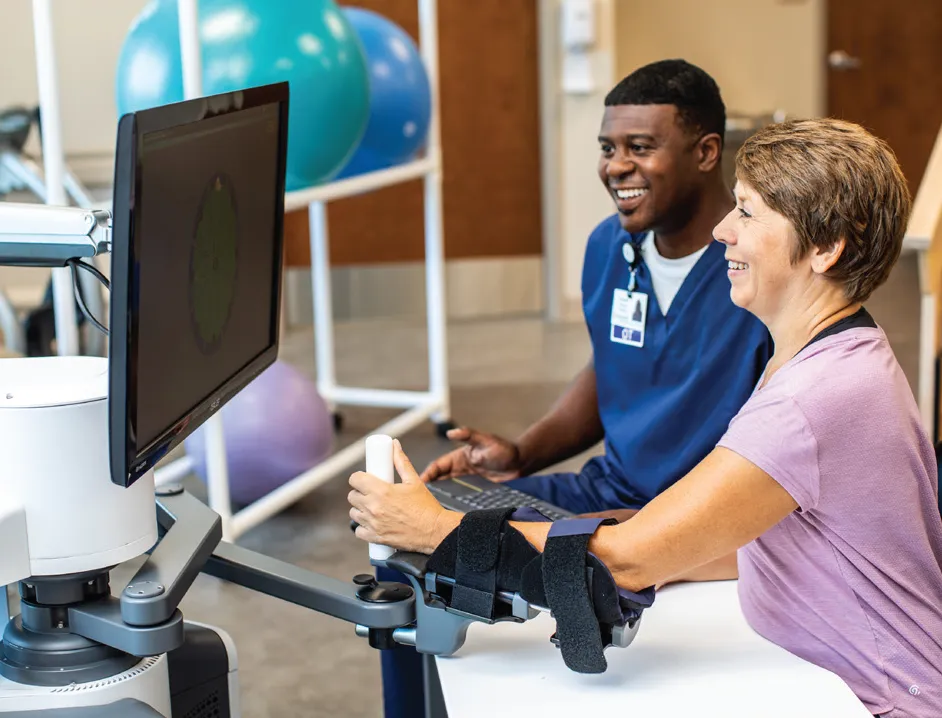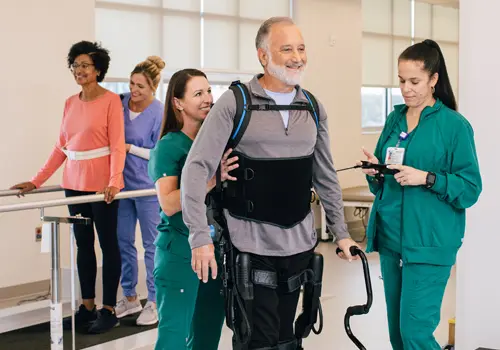Therapeutic Technology
Our hospital provides such leading-edge technology – as well as therapists trained to use it best – to ensure our patients are positioned to recover as quickly as possible.
Innovative Solutions for Superior Outcomes
New technology continues to push the boundaries of what once was considered full recovery from certain injuries or conditions. Today, for instance, top inpatient rehabilitation facilities deploy robotic tools that give stroke patients the ability to use their upper extremities again or help spinal cord injury patients with early ambulation.
Our hospital provides such leading-edge technology – as well as therapists trained to use it best – to ensure our patients are positioned to recover as quickly as possible.
Here are some examples of some of the industry’s best technology deployed at our hospital:
Overhead Body Weight Support System
Our overhead body weight support system provides dynamic body weight support while patients practice walking, balance tasks, sit-to-stand transfers, open and closed-chain strengthening exercises, and even steps. This system is mounted to an overhead track, allowing for use within the parallel bars or outside of the bars when introducing an assistive device during gait training progression. The body weight support system provides a safe environment for patients to begin standing, transfer, and gait training.

InMotion
The BIONIK InMotionARM™ Robot is often used with many patients who suffer from weakness in their upper extremities after a stroke. The ARM Robot helps patients utilize their strength to complete hundreds of repetitions in a fraction of the time of traditional exercise. Repetition is one of the most important factors when considering neuroplasticity and the brain’s ability to repair and relearn movements following a stroke. This evidence-based neurorehabilitation technology quietly monitors the patient’s movements during therapy while gently assisting where needed to help them complete various motor therapy activities.

EksoGTTM
The EksoGT™ exoskeletal unit assists patients with early ambulation following a stroke or spinal cord injury. Ekso is a robotic exoskeleton that can be fitted to most patients to allow them to stand and ambulate early in the rehab process, which is key to their long-term prognosis. Clinical evidence indicates that gait training in the Ekso improves patients’ balance, walking distance, and gait speed outside of the device at discharge compared to admission.

RehabTracker
RehabTracker is a groundbreaking person-centered mobile app that is transforming how our partners engage with patients and their families. Combined with our approach of focusing our care around What Matters to You (the patient), RehabTracker allows patients and their invited loved ones to view their personalized goals, see and track their patient progress in real-time as logged by our therapists, including overall progress toward discharge goals, activities of daily living, distance and transfers, share that progress with invited family and friends, share patient photos during their recovery journey, receive comments from staff and messages of support from loved ones – all from the palm of their hands. Areas of patient progress include self-care activities such as bathing, dressing, and eating, mobility activities including walking, transfers, and bed mobility, speech-language activities including expression and comprehension, memory and problem-solving, and diet/swallowing food and liquid consistencies. Facilities utilizing RehabTracker have experienced greater levels of patient motivation as well as patient and family member engagement and satisfaction.




